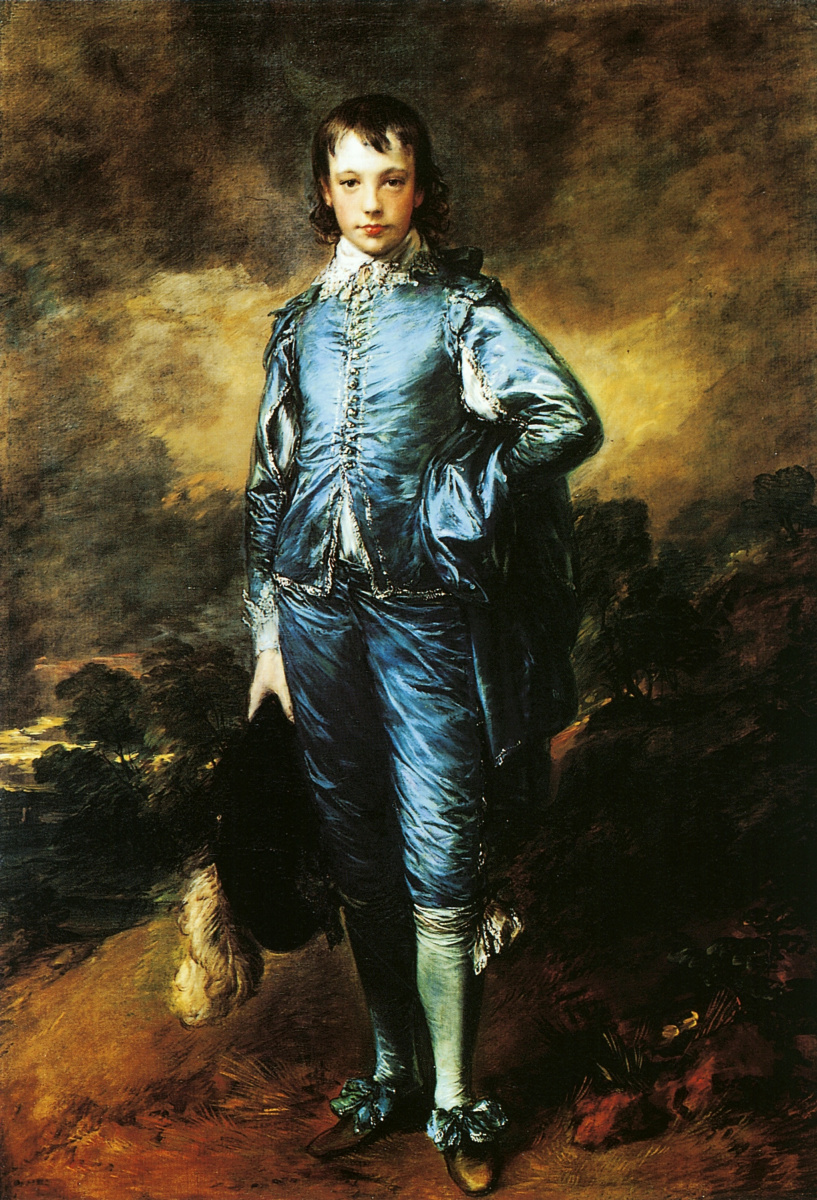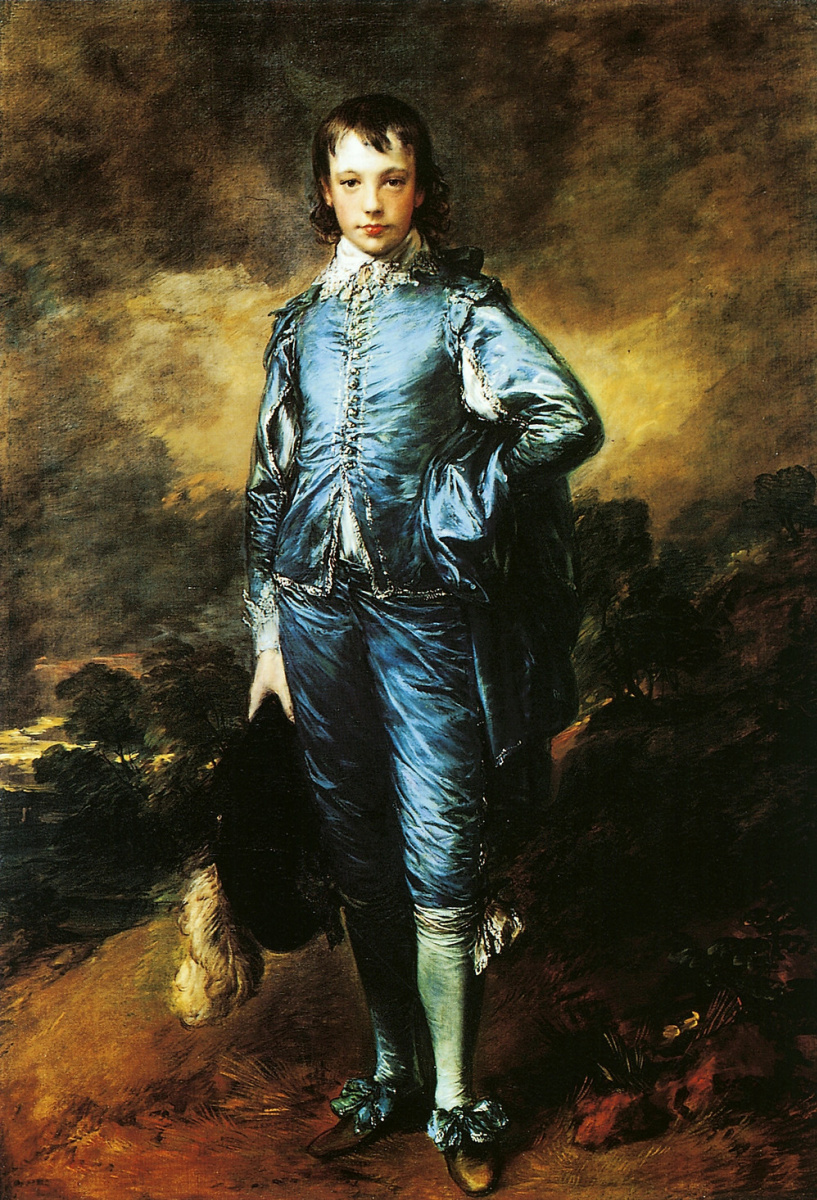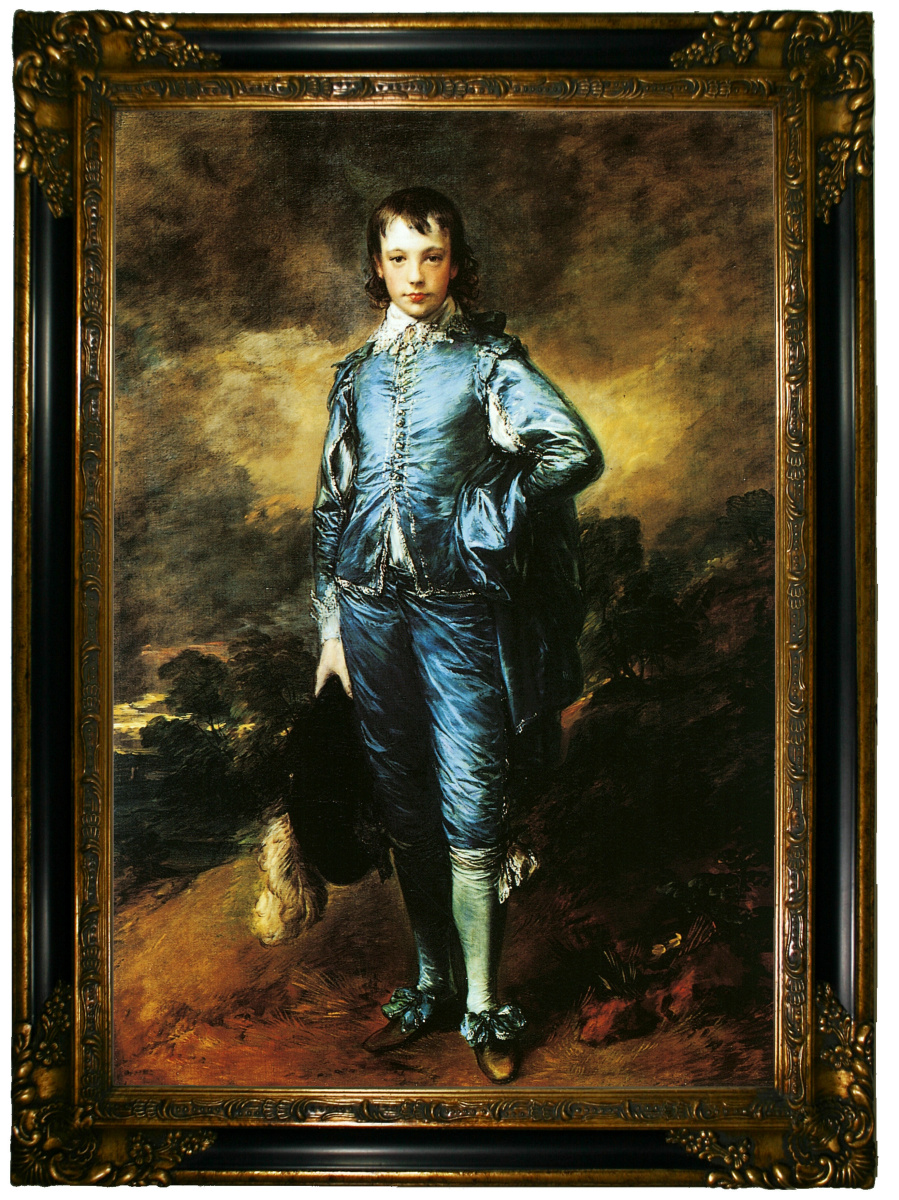log in
Enter site
Login to use Arthive functionality to the maximum
The Blue Boy
Thomas Gainsborough • Painting, 1770, 178×122 cm
Description of the artwork «The Blue Boy»
Jonathan Buttall, who sat for Gainsborough's The Blue Boy, was the son of the artist's acquaintance, a wealthy hardware merchant. It was the model's expression of independence and personal significance that attracted the artist. Subsequently, the grown up Jonathan collected Gainsborough's drawings, they became friends.
Why was Jonathan Buttall dressed in the costume of the aristocrat?
Jonathan Buttall, as noted, was not an aristocrat. Why, then, is he dressed in such a magnificent suit with white stockings, blue satin breeches and camisole with gold embroidery, a collar and cuffs made of expensive lace? This is due to the widespread fashion in Britain in the 1770s to pose for portraits in 17th century costumes, like those in which the aristocrats from the paintings of Rubens and Van Dyck were dressed (by the way, they were Gainsborough's favorite artists who greatly influenced his style).
The Blue Boy was often praised for its sophistication. However, in a completely democratic spirit, with this portrait Gainsborough asserted that nobility was not in aristocratic genes, but in the personality itself.
Composition and color scheme of the painting
Like in most of Gainsborough's portraits, the composition of The Blue Boy is very simple: the figure is located in the very center of the canvas, with one shoulder and one side of the body pulled slightly forward. In spite of the static pose, Gainsborough skilfully renders the liveliness of the figure.
Gainsborough's Blue Boy demonstrates a rich variety of cool hues like silver blue, dark blue, the dull green, silver-fawn, and grey. The picture even gave reason to believe that blue was the artist's favorite color. There is also a version that The Blue Boy painting was Gainsborough hidden polemic about portraiture and views on art with his rival Joshua Reynolds.
Adhering to academic classicist views, Reynolds believed that a portrait should always base on brown and red, and the cold hues could only be complementary. According to Reynolds' theory of color, the cool shades could be used only in portraying the shadow. Gainsborough, as a rule, abstained from the theoretical debates within the walls of the Royal Academy; he denied the thesis of Reynolds with the very existence of The Portrait of Jonathan Buttall.
By the way, in the creative heritage of Gainsborough, there is also the so-called Pink Boy (Young Francis Nicholls (The Pink Boy), that is very similar in composition, but much less well known than The Blue Boy.
Written by Anna Vcherashniaya
Why was Jonathan Buttall dressed in the costume of the aristocrat?
Jonathan Buttall, as noted, was not an aristocrat. Why, then, is he dressed in such a magnificent suit with white stockings, blue satin breeches and camisole with gold embroidery, a collar and cuffs made of expensive lace? This is due to the widespread fashion in Britain in the 1770s to pose for portraits in 17th century costumes, like those in which the aristocrats from the paintings of Rubens and Van Dyck were dressed (by the way, they were Gainsborough's favorite artists who greatly influenced his style).
The Blue Boy was often praised for its sophistication. However, in a completely democratic spirit, with this portrait Gainsborough asserted that nobility was not in aristocratic genes, but in the personality itself.
Composition and color scheme of the painting
Like in most of Gainsborough's portraits, the composition of The Blue Boy is very simple: the figure is located in the very center of the canvas, with one shoulder and one side of the body pulled slightly forward. In spite of the static pose, Gainsborough skilfully renders the liveliness of the figure.
Gainsborough's Blue Boy demonstrates a rich variety of cool hues like silver blue, dark blue, the dull green, silver-fawn, and grey. The picture even gave reason to believe that blue was the artist's favorite color. There is also a version that The Blue Boy painting was Gainsborough hidden polemic about portraiture and views on art with his rival Joshua Reynolds.
Adhering to academic classicist views, Reynolds believed that a portrait should always base on brown and red, and the cold hues could only be complementary. According to Reynolds' theory of color, the cool shades could be used only in portraying the shadow. Gainsborough, as a rule, abstained from the theoretical debates within the walls of the Royal Academy; he denied the thesis of Reynolds with the very existence of The Portrait of Jonathan Buttall.
By the way, in the creative heritage of Gainsborough, there is also the so-called Pink Boy (Young Francis Nicholls (The Pink Boy), that is very similar in composition, but much less well known than The Blue Boy.
Written by Anna Vcherashniaya




